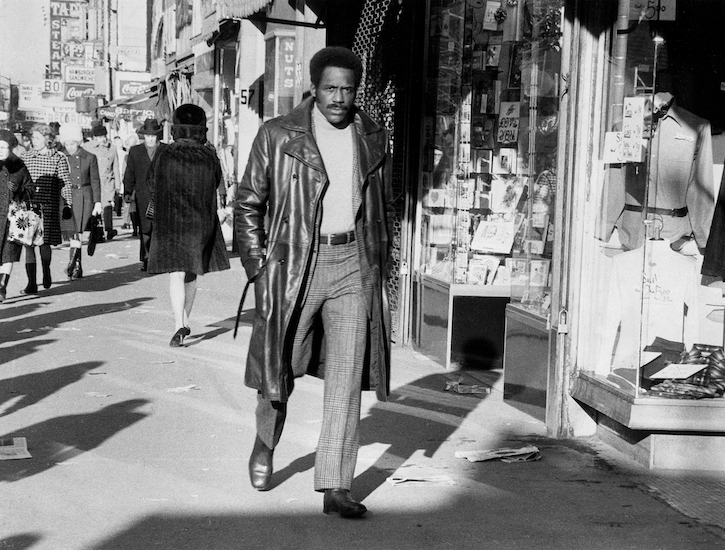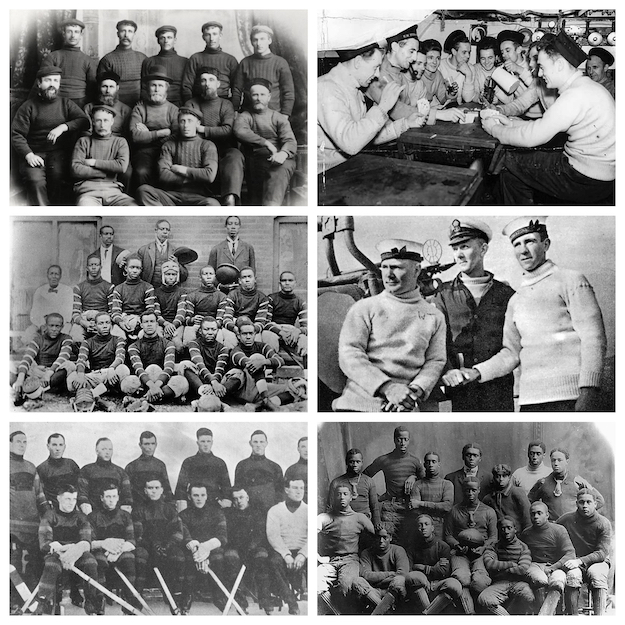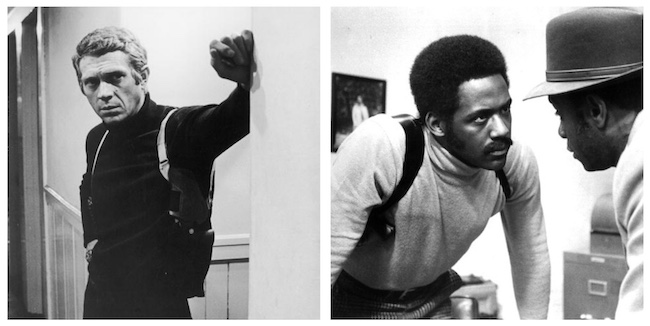
It’s a funny thing about the men’s turtleneck.
Most male garments which were born from the world of the working class, the military, and/or sports, and then became the clothing choice of rebels in the mid-20th century, still retain a bit of their aura of ruggedness and edge today, even though they can be more than a century removed from their origins and have become thoroughly mainstream. Witness the fact that jeans, leather jackets, and t-shirts, which were first worn by miners, aviators, and GIs before becoming the duds of rebel-without-a-cause types during the 1950’s, still evince a little coolness even now.
Yet the turtleneck, which has the same sort of manly history, typically does not.

Turtlenecks as we know them today were worn by working class men starting in the latter half of the 19th century. They were particularly popular amongst dockworkers, fishermen, and sailors, for the garment’s signature high-reaching, folded-over collar served a valuable functional purpose in insulating the neck from cold winds and keeping the men warm as they labored. Turtlenecks were worn by athletes of the time — whether they played baseball, football, polo, or hockey — for the very same reason.
The garment really came into style in the 1950’s, for the most countercultural of reasons. They were adopted as a stylish alternative to wearing a dress shirt and tie, and thus worn by those most inclined to chafe at anything either literally or metaphorically buttoned-up: artists, musicians, poets, philosophers, intellectuals. Beatniks.

The turtleneck’s popularity and association with culture’s edgier, more renegade-esque types continued into the 1960’s, being adopted by members of the Black Panthers, and becoming the notable sartorial choice of cinematic detectives from Steve McQueen’s Frank Bullitt to Richard Roundtree’s John Shaft.
Yet despite this iconoclastic history, today the turtleneck is often thought of as kind of dweeby — a little twee, stodgy, effete. Why is that?
Well, one can only surmise the exact cultural currents that moved the turtleneck from rugged to hip to nerdy, but it likely can be traced back to its prevalence on college campuses and amongst the beatnik scene. Once-rebellious intellectuals became aging professorial yuppies. Their personal lifestyles moved closer to the mainstream of culture, while the mainstream of culture moved closer to what was formerly considered rebellious (eschewing dress shirts and ties isn’t so edgy anymore). Thus turtlenecks maintained a kind of nerdy reputation befitting its ties to academia, while academia lost some of its cool cache.
A hypothesis at least.
At any rate, the popularity and connotations of the male turtleneck have waxed and waned over the last half century, and today reached a status that seems to be approaching something like neutrality.
In an effort to further tip the dial of the turtleneck into neutral territory, and turn an underutilized part of the male wardrobe into something more guys can reach for without hesitation, below we share how to pick a turtleneck and wear it with style.
Picking a Turtleneck
The turtleneck can be a handsome, functional, and versatile garment. Donning one can dress up a pair of jeans, or dress down a suit. Soft and stretchy, turtlenecks are more comfortable than dress shirts, and yet still make you
No comments:
Post a Comment